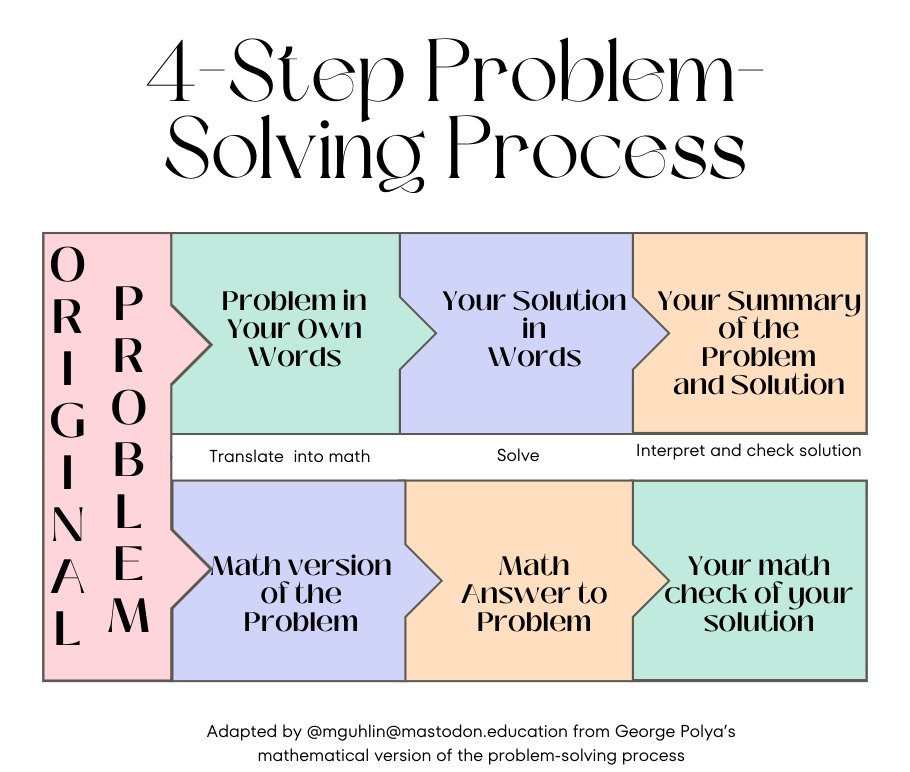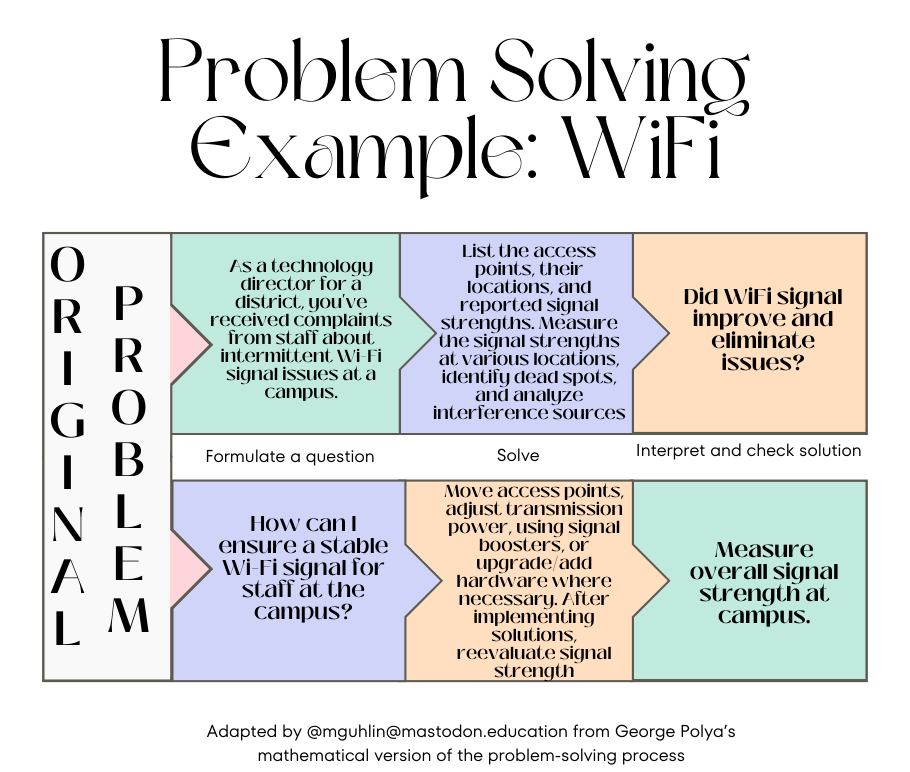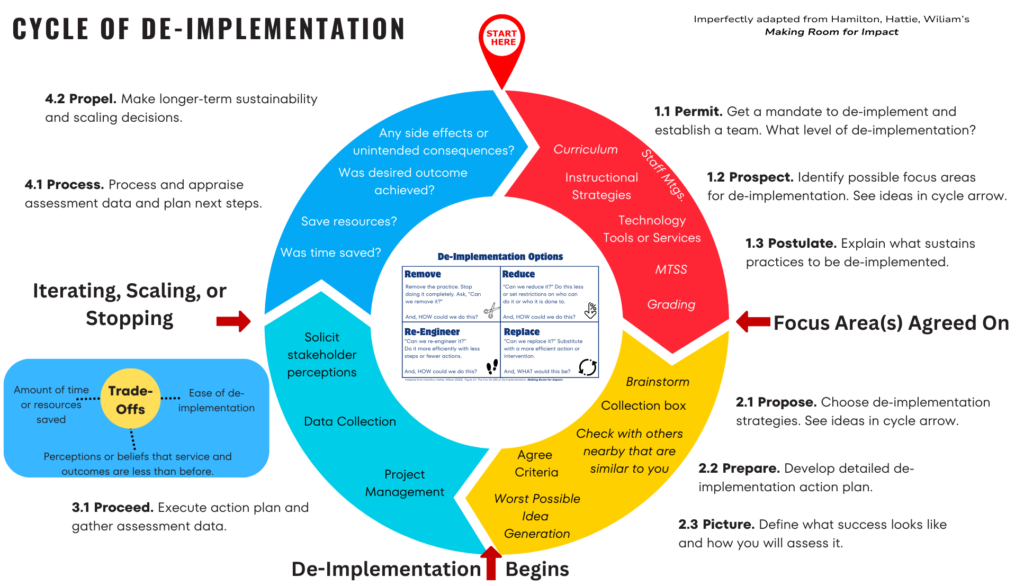Wish you could solve problems through projects and initiatives? Looking for a process that will prevent “misfit projects” that die out quickly or continue moving forward even though they shouldn’t? You can put new processes in place to save you time, money, and effort. Whether you are at the campus or district level, your project management will reflect on you. Here are three tips to make the job easier.

Tip #1: Identify Problems to Solve
Problems often knock on our door. They can present themselves in a multitude of ways, as passionate co-workers and colleagues with a desire to see a better outcome, for example. Often, these problems are easy to diagnose.
In project management, a problem-solving process like this works well:
- Understand the problem
- Devise a Plan
- Carry out the Plan
- Look Back
Most of us work through this process quickly. The danger is when we skip gathering, collecting, and analyzing data before beginning a project. Applying solutions without a clear understanding of the problem can compound the problem. So, first identify the problems to solve and the goals for the project.
Example:

Unfortunately, some projects may require more funding and effort. What do you do in that case?
Tip #2: Plan Your Next Steps
Once the problem is identified, the tough part becomes determining the project management process to follow in order to solve the problem. But a process is not enough to solve a problem. You also have to communicate well, maintain relationships with stakeholders, collect feedback and data, and more.
Here’s the process that I relied on many times in my school district:

Take a moment to work your way through the process, moving from start to stop. Each project management action phase has certain suggestions that can ease project management headaches.
Tip #3: De-Implement a Project
Misfit projects are like weeds that won’t stop growing and growing. At first, they were useful, but then, they outgrew their usefulness. You continue to pay for them and spend time on them, so they persist long after they should have.
The authors of “Making Room for Impact: A De-Implementation Guide for Educators” offer a solution in a step-by-step process for deciding which projects are working and “how to let go of ones that are not.” This video is worth the hour of insights.
You can apply their process to technology director challenges. Here is my interpretation of the de-implementation cycle they outline in their book:

You may have heard of a “stop-doing list.” Before you start a new initiative, you first decide what initiatives need to stop. In a way, it’s like allocating $60 a month for online streaming services. Before you commit to a new one, you have to stop one or more.
In their book, the authors outline four ways to go about no longer doing stuff. What stuff? Stuff that is ineffective, expensive, too complex, or stressful. Here is what the authors shared:
- Substitute. Replace less effective practices with others that have more evidence and probability of impact
- Replace. Switch out more expensive interventions with less expensive and equally effective solutions
- Streamline. Simplify over-designed practices.
- Scale down. Use needed processes less frequently or be more selective about who uses them.
- Make more time. Stop doing things that cause unnecessary stress and gain time to do other things better.
They offer these four de-implementation ideas:
- Remove: Stop doing it.
- Reduce: Do less.
- Re-Engineer: Do something in a more efficient way.
- Replace: Substitute
There are, of course, political challenges of de-implementation if you are working with a lot of people. This makes reading the book, “Making Room for Impact,” all the more important, since it addresses these challenges.
Project management is hard. There are too many demands and not enough time and money. Learning to let go of misfit projects is one way to move forward. Leaders must decide what to keep or stop in order to make project management more effective. This is a constant challenge. To decide, leaders can:
- Define problems. Identify the problem and set project goals.
- Plan next steps. Gather, analyze, and share data for planning and funding purposes.
- De-implement. Be ready to stop less effective things to make more room for more impactful projects.
The authors of “Making Room for Impact” show how examining programs can help. Frameworks like “substitute, replace, streamline, and scale down” lead to less stress and better results. Applying these project management tips will lead to more focused and rewarding work. Give them a try.
